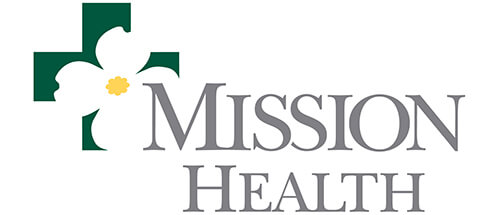Mission Health

The Challenge
Memorial Campus for years had a problem with segregation of pharmaceutical waste and increasing cost associated with this. There were black bins installed all over the hospital, making it an easy option to throw all waste away in these bins. The hospital was having trouble educating the staff of what goes into what bin. This caused a huge cost issue and required a full-time EVS employee to spend entire weeks pulling the black bins and taking them to the dock. Memorial campus was being serviced 3 times a week, disposing of 36, 45, and 55 gallon boxes every week.
Our Approach
STEP 1
We met with EVS and Safety to walk the hospital to identify their current process and set up. While walking the hospital we spoke with nursing to ask what they knew about the black bins and what they would like to see in handling this issue. 90% of the staff said they wanted a list of what is hazardous pharmaceutical waste. Additionally, we conducted a waste audit of the black bins. During this exercise we found items that should be empty, like full saline bags, gloves, expired meds, packaging of meds, and non-hazardous RCRA.
STEP 2
Daniels requested a list from Mission Pharmacy to see all drugs they used, ran a formulary for Mission to show what each drug was coded and what drugs were not hazardous, and finally presented the list and formulary to Safety and Nursing Admin. Here we worked together to put a standard list of all the drugs that were considered hazardous waste.
STEP 3
Leading up to the rollout of our non-hazardous reusable containers. We educated all nursing staff throughout the hospital to show the list and explain the new process. We also educated on certain packaging and saline bags to go directly to general waste. We worked with the staff on how many locations of non-haz containers they needed and where they should be placed.
The Solution
During the rollout, we reduced the number of hazardous waste bin locations and placed a laminated sheet “cheat sheet” of what drugs are haz above each bin. We placed the non-haz bins in the discussed areas (key here was to make these more accessible for the staff.) Again we placed the haz drug list above these and explained that if it’s on this list they go in the black bin.
Daniels Health was in place here at Mission before I started in 2012, and at that time Daniels only had our sharps collection and disposal business. Working with their sales and operations teams over the years demonstrated how they handled operational/quality challenges. With Healthcare having so many shifting needs and priorities it was important for Mission Health to work with a company that could adapt as fast as we were required to at times. It was this ongoing proof by actions taken by Daniels and not just words that allowed us to consider them as a partner when we converted our multiple waste streams from six vendors down to two vendors. Since we have condensed our vendors and now have all but two waste streams under Daniels, operational challenges with waste segregation are fast becoming a thing of the past for us at Mission Health.
Daniels commitment to reduce the confusion or segregation of these multiple waste streams was demonstrated again by Daniels Health sending teams on site to do in person education with all of our Clinical and Non-Clinical department leadership and front-line staff. We have seen a tremendous reduction in our cost associated with Hazardous Waste and this has allowed us to divert Mission EVS Staff who were once dedicated to this task onto more acute needs throughout our hospitals.
It has been my continued pleasure to work with Daniels Health and I look forward to our continued partnership to better improve our waste generation and disposal at Mission Health.
David Calderon
The Outcome
The non-haz containers have been in the hospital for 8 months. Our tech handles the removing of these containers which frees up Missions EVS employees to focus on other tasks. Since implementing this program, the hospital has gone from going through 36-45 x 55 gallon boxes of haz waste to less than six x 55 gallons a week. This reduced Mission Health’s spend by more than 50%. Through our partnership and continuing education to hope to continue to reduce this number.
We have seen a tremendous reduction in our cost associated with Hazardous Waste and this has allowed us to divert Mission EVS Staff who were once dedicated to this task onto more acute needs throughout our hospitals.
David Calderon
